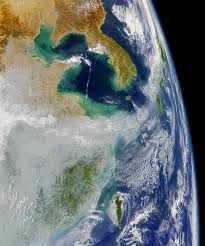Asia pollution affects global weather: Study

A new study suggests that air pollution in China and other Asian countries is having far-reaching impacts on weather patterns across the Northern Hemisphere.
The study published by the Proceedings of the National Academy of Sciences (PNAS) found that pollutants are strengthening storms above the Pacific Ocean and having negative consequences for weather patterns.
The study also revealed that severe air pollution feeds into weather systems in other parts of the world, especially during the wintertime.
“The effects are quite dramatic. The pollution results in thicker and taller clouds and heavier precipitation,” said lead author Yuan Wang.
Furthermore, the study showed that aerosols formed by human activities — fossil fuel burning, industrial processes and traffic — over South Asia affect circulation around the whole world.
The aerosols “tend to make storms deeper and stronger and more intense, and these storms also have more precipitation in them,” said co-author Renyi Zhang.
The study comes as parts of Asia have some of the highest levels of air pollution in the world.
In China’s capital, Beijing, pollutants frequently reach hazardous levels, as pollution levels in Chinese cities have shot up in recent years due to increased car ownership and growing industrial production.
In addition, in India’s capital, New Delhi, air pollution usually soars above levels recommended by the World Health Organization.
Tehran is also among the cities grappling with air pollution.








